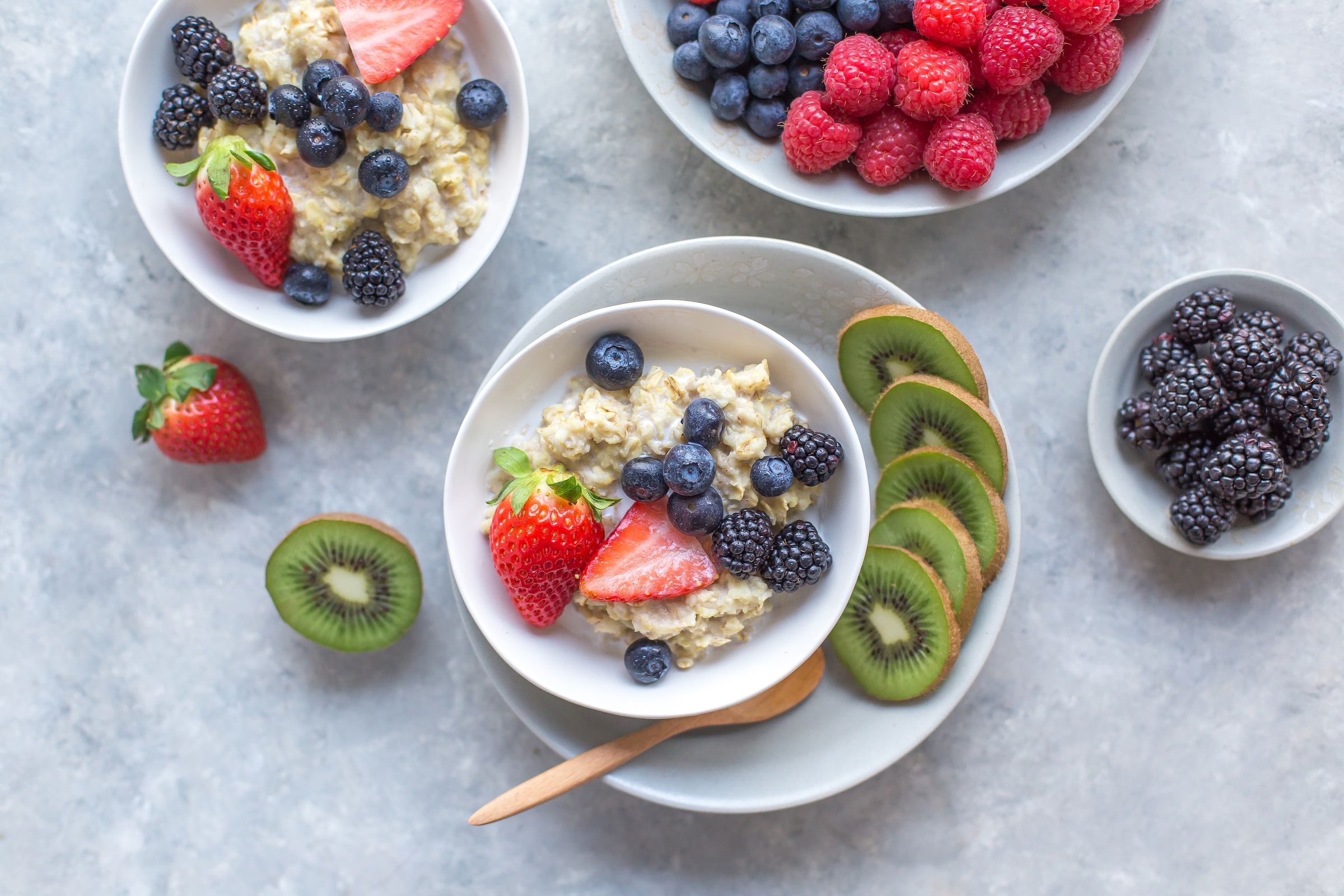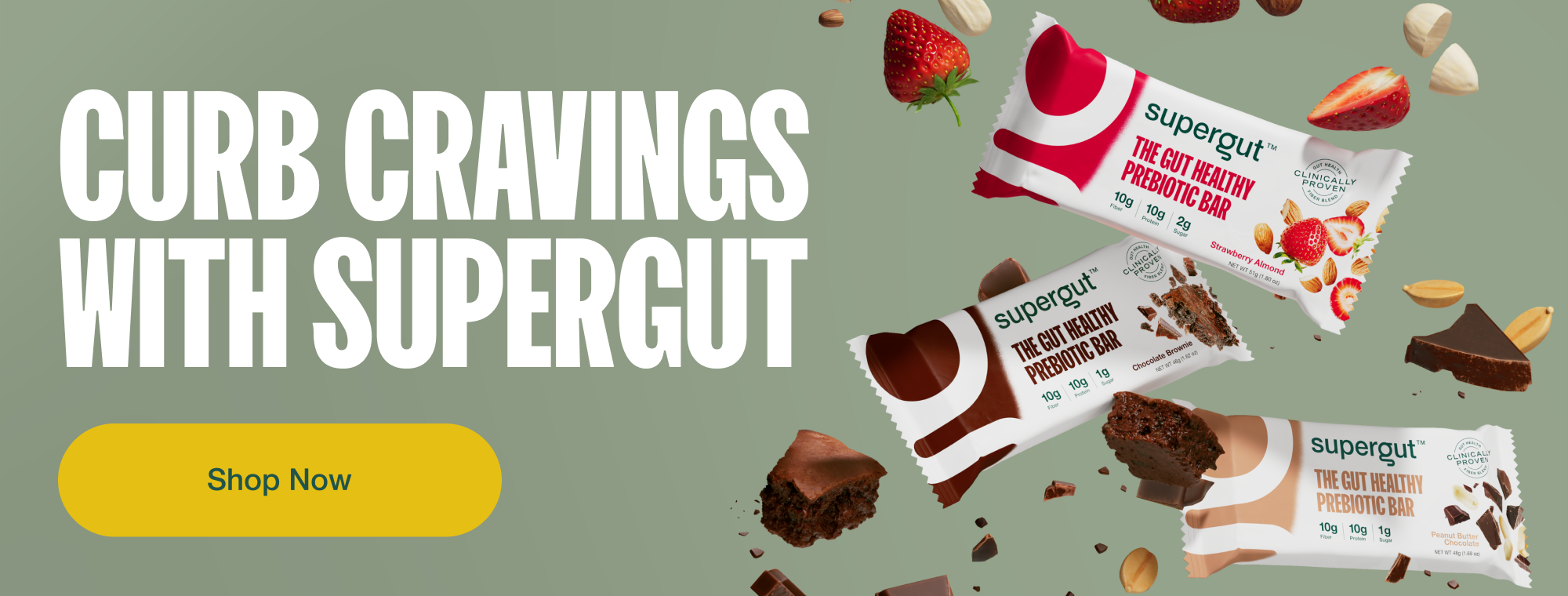You've probably heard of GLP-1. But maybe you don't know that this hormone is already found in your gut and plays a significant role in regulating appetite and metabolism. What's more, there are ways to support its production naturally.
Enter prebiotic fiber—the unsung hero for appetite control. When consumed regularly, prebiotic fiber feeds the beneficial bacteria in your gut, setting off a chain reaction that stimulates the natural release of GLP-1. The result? You feel fuller for longer, experience fewer cravings, and support healthier blood sugar levels—all from nourishing your gut the right way.
What is Prebiotic Fiber?
Prebiotic fiber is a type of non-digestible carbohydrate that serves as food for beneficial microbes living in your gut. It plays a crucial role in helping to maintain a balanced gut flora. Different types of prebiotic fibers exist, including inulin and Fructooligosaccharides (FOS), which are found in foods like garlic, asparagus, and leeks.
But one of the very best types of prebiotic fiber for human health is resistant starch—an underrated superfood that many of us don’t consume enough of, but that has a wide range of health benefits, including an uncanny ability to nourish the good microbes in your gut.
Resistant starch and other prebiotic fibers work by traveling undigested to your colon, where they ferment and feed beneficial bacteria like Bifidobacteria and Lactobacilli. These bacteria, in turn, produce compounds like short-chain fatty acids, which have numerous health benefits, including improved gut health and enhanced feelings of satiety, helping you control hunger naturally.
How Prebiotic Fiber Supports GLP-1 Production
GLP-1 (Glucagon-Like Peptide-1) is a hormone naturally produced in your gut that plays a significant role in appetite regulation, blood sugar balance, and digestion. One of the most fascinating benefits of prebiotic fiber is its ability to support the body’s natural production of GLP-1 through interactions with the gut microbiome.
When prebiotic fiber is consumed, it reaches the colon mostly undigested. There, it serves as a substrate for fermentation by gut bacteria, particularly beneficial species like Bifidobacteria and Lactobacilli. The fermentation process produces short-chain fatty acids (SCFAs) such as acetate, propionate, and butyrate.
These SCFAs have several functions:
- They serve as an energy source for the cells lining the colon.
- They have an anti-inflammatory effect that helps maintain a healthy gut barrier.
- Importantly for our discussion, they stimulate the release of hormones like GLP-1.
Here’s how it works in simpler terms:
- You consume foods rich in prebiotic fiber.
- The fiber reaches your colon and gets fermented by good bacteria.
- This process produces SCFAs.
- SCFAs stimulate the release of GLP-1.
- Increased GLP-1 levels help regulate blood sugar, curb cravings, and reduce appetite.
It’s a remarkable chain of events that starts with something as simple as eating more fiber—and ends with better metabolic balance and hunger control.
Benefits of Prebiotic Fiber Beyond Hunger Control
The health benefits of prebiotic fiber aren't just limited to appetite and satiety. After all, prebiotic fiber is the number one source of fuel for the good microbes in your gut. Your gut microbiome, meanwhile, is critical for regulating some of your body’s most important biological processes.
A balanced gut can improve immunity by enhancing the production of antibodies and promoting the growth of beneficial immune cells. It can reduce inflammation, lower cholesterol, and balance blood sugar. It can improve colon health, digestive health, even brain health via the Gut-Brain Axis—a two-way superhighway of communications between the gastrointestinal tract and the central nervous system. And as we’ve discussed, your gut is also responsible for producing feelings of satiety and appetite control based on various nutrient signals sent from your gut to your brain.
In short, when you consume foods rich in prebiotic fiber, you transform your gut into your very own partner in health.
Scientific Studies Supporting the Efficacy of Prebiotic Fiber
Numerous scientific studies have explored the role of prebiotic fiber in human health. A study published in the Journal of Nutrition found that prebiotic fiber can significantly increase feelings of satiety. Another study says, “Prebiotic fiber supplementation is a promising approach to improve weight loss and reduce metabolic complications.” While more research is always ongoing, the existing body of evidence strongly supports the benefits of prebiotic fiber as a natural, effective way to improve gut and metabolic health.
How to Incorporate Prebiotic Fiber Into Your Diet

Incorporating prebiotic fiber into your lifestyle doesn’t require anything complicated. It’s as simple as eating more of the following foods:
- Garlic and Onions: Both raw and cooked garlic and onions are excellent sources of inulin prebiotic fiber.
- Bananas: Especially unripe, green bananas, which contain a significant amount of prebiotic resistant starch.
- Whole Grains: Foods like whole grain bread, whole grain pasta, and oats are great sources of fiber.
- Potatoes: Especially uncooked potatoes and/or potatoes that are cooked and then cooled have high amounts of prebiotic resistant starch.
- Legumes: Chickpeas, lentils, and other legumes are rich in prebiotics.
- Apples: These contain both soluble and insoluble fiber, including prebiotic fiber.
- Berries: Strawberries, blueberries, and other berries offer a powerful blend of soluble fiber and polyphenols which have been shown to have prebiotic benefits.
Remember to introduce prebiotic foods gradually into your diet to allow your gut to adjust. This can help minimize bloating or digestive discomfort.
How Supergut Can Help Fill in the Gaps
The recommended amount of fiber people should consume daily is about 25-30g. Unfortunately, the vast majority of us don’t even get half that. In fact, 95% of Americans are fiber deficient, which has all sorts of negative health ramifications.
If you’re struggling to get enough prebiotic fiber into your diet with whole foods, then it’s important to help supplement your diet to fill in the gaps. That’s where Supergut comes in. Our lineup of prebiotic fiber products includes award-winning shakes, snack bars, and easy-to-mix powders both unflavored and flavored.
What’s more, these products aren’t just convenient and delicious. They're backed by clinical studies. In a gold-standard, placebo-controlled study, participants consuming Supergut shakes over a 12-week period saw significant improvements in blood sugar control, healthy weight loss, and other key metabolic functionality.
In conclusion, prebiotic fiber is one of the most powerful, natural tools for improving appetite control, blood sugar, and metabolic health. And Supergut makes it easier than ever to get your daily dose—so your gut can do what it was always meant to do: keep you feeling balanced, nourished, and in control.









